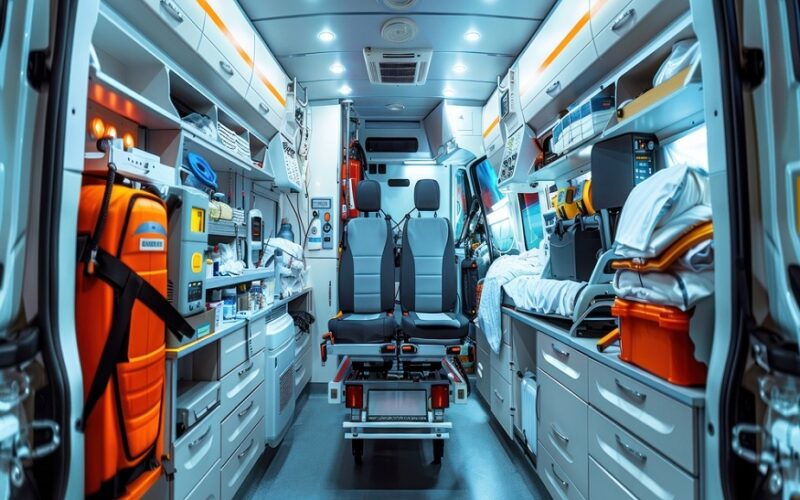Air medical teams rush to offer aid when every second is critical and lives hang in the balance. These flying hospitals have advanced equipment that can save lives. But what exactly fills these airborne emergency rooms?
Life-Saving Machines That Fly
Air ambulances use advanced technology in compact areas. Ventilators help patients breathe when their lungs cannot function on their own. These devices deliver oxygen to injured lungs. Heart monitors observe heart rates and blood pressure levels. They sound alarms and light up. This gives medical teams instant patient condition updates. Defibrillators use electric shocks to restart hearts. These devices restore normal heart rhythms. It’s the human equivalent of a jump-start.
Medications for Every Emergency
Flight medics carry medications that act quickly and save lives. Pain relievers assist patients in remaining at ease during turbulent flights while anticoagulants stop harmful clots from developing. Sedatives can calm down patients who are anxious and pose a risk to themselves or the personnel.
Certain drugs counteract overdoses within minutes. Some prevent life-threatening allergic reactions that can occur in just hours. According to the people at LifePort, air medical equipment includes temperature-regulated storage that maintains the stability and efficacy of these medications.
Tools for Trauma and Surgery
Helicopter teams require tools that function in limited space. Surgical kits include all essential items for urgent procedures at an altitude of 1,000 feet. Airway management devices assist physicians in placing breathing tubes when individuals are unable to breathe independently.
Blood products are transported in specialized coolers. Plasma, red blood cells, and platelets can help patients regain what they’ve lost through injury. These products expire quickly. Therefore, teams should manage their inventory carefully.
Communication and Navigation Gear
It is vital to stay connected. Radio systems let flight crews to communicate with medical facilities, ground ambulances, and air traffic controllers. GPS guides pilots to crash sites and landing zones. Radar helps teams avoid dangerous storms. Some helicopters have night vision. This technology brightens the night, aiding rescue teams.
Specialized Equipment for Different Emergencies
People with burns need special bandages and creams to heal. People who have had a heart attack need specific clot-busting drugs. Then there are the stroke patients who need equipment for brain and blood flow monitoring. Helicopters equipped with ventilators and incubators can transport premature babies. These small but powerful incubators save premature babies’ lives during transfer.
Safety Equipment That Protects Everyone
Flight suits shield personnel from flames. They also offer protection from severe weather. Moreover, helmets protect heads from things like rotor wash and airborne objects and seatbelts keep everyone safe during a turbulent flight or unexpected landing. Indeed, during a hard landing, crash-proof fuel systems help prevent fires. Emergency beacons, in the meantime, help rescue teams locate crashed aircraft, and fire extinguishers can suppress electrical fires that pose a threat to vulnerable equipment.
The Human Element
All this technology holds no value without talented individuals to operate it. Flight nurses and paramedics undergo years of training to become proficient with their gear. They rehearse techniques until they can operate with their eyes closed. In emergencies, instinctual responses kick in. Pilots are thoroughly familiar with their aircraft. They comprehend the impact of medical devices on weight and stability. They design pathways that transport patients to hospitals in the quickest and safest manner possible.
Conclusion
Air medical teams transport mobile hospitals that compete with ground-based emergency rooms. Each piece of equipment has its function, and redundancy avoids single failure points. This airborne toolkit embodies decades of medical progress condensed into planes that compete with time. In times of crisis, these airborne rescuers deliver hope from above. They transport the resources essential to turn catastrophe into triumph.

